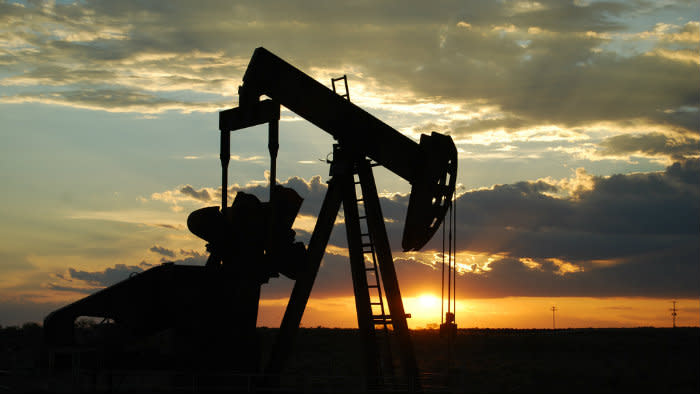Cash In on the Optimism Surrounding Oil: Buy Parex Resources Inc.

Saying that the last three years have been a difficult time for energy investors would be an understatement. After the shocking collapse of oil in late 2014, prices have whipsawed wildly, reacting to any piece of news no matter how insignificant.
While crude has recovered from its recent downward spiral to be over US$50 per barrel, there are still fears that it could slump again in coming months.
When making a contrarian bet on energy stocks in such an environment, it is important for investors to consider only those with quality assets, growing production, and solid balance sheets. One upstream oil company that stands out for all the right reasons is Parex Resources Inc. (TSX:PXT).
Now what?
Parex, whose operations are focused on the South American nation of Colombia, continues to report some impressive results despite the prolonged oil slump. For 2016, annual oil production grew to 29,715 barrels daily, which was an 8% increase over a year earlier.
This can be attributed to Parex maintaining investments in its operations regardless of sharply lower oil prices.
That trend will continue into 2017 because Parex has somewhat surprisingly announced that it will double capital expenditures to as high as US$225 million. A considerable portion totaling US$90 million will be directed to exploration, funding the drilling of 14 wells over the course of the year.
Another US$80 million is allocated to drilling up to 20 appraisal wells; it?s estimated these wells will generate up to 3,000 barrels of daily oil production. The remaining funds will be used for maintenance, which is anticipated to add about 30,000 barrels of daily oil output.
As a result, 2017 oil production is forecast to grow by 21% compared to 2016, allowing Parex to take full advantage of higher oil prices over the course of the year.
Then there is Parex?s high-quality oil acreage, which, at the end of 2016, was independently assessed to hold 112 million barrels of oil reserves. This represents a healthy 37% increase compared to a year earlier, illustrating the considerable exploration upside possessed by its oil assets.
These reserves have a long production life of 10 years and were independently assessed to have a value of US$2.3 billion after applying a 10% discount rate in accordance with industry standards. This comes to almost $20 per share, or 12% higher than Parex?s share price at the time of writing, and, importantly, such a valuation appears feasible given the conservative estimations made.
Parex?s reserves can only continue to grow over the course of 2017 because it has significantly ramped up investments in its exploration and development program. That can only lead to one thing ? increasing production ? allowing Parex to continue cashing in on higher oil prices.
Another important aspect of Parex?s operations is that it has been able to substantially reduce costs. Production expenses in 2016 were down by 33% year over year while transportation costs fell 16%.
This trend is expected to continue during 2017, helping to boost margins and Parex?s netback, which is a key measure of operational profitability. If Brent, the international benchmark oil price, is at US$50 per barrel, then Parex has forecast a netback of US$17 per barrel, and this climbs to US$21 if Brent rises to US$55 per barrel.
The company has also established a short-term hedging program to protect against the chance of crude falling to under US$50 per barrel during 2017.
So what?
Parex is an outstanding upstream oil producer with a solid operational history. It has consistently been able to unlock value for shareholders. For the reasons discussed, I expect this to continue throughout 2017 and beyond, which will drive its share price higher over time.
You've probably never even heard of this up-and-coming e-commerce powerhouse headquartered in Eastern Ontario...
But, despite coming public just last year, it's already helping the likes of Budweiser... Tesla... Subway... and Red Bull move $9.9 BILLION (and counting) worth of goods online each year.
And now it's caught the eye of the legendary investor who got behind Amazon.com in 1997 -- just before it shot up over 23,000% and made investors like you and me rich beyond their wildest dreams.
Click here to discover why this investor says it's time to buy.
More reading
Income Investors: Should TransCanada Corporation Be in Your TFSA Today?
RioCan Real Estate Investment Trust vs. First Capital Realty Inc.: Which Is the Better Buy?
Fool contributor Matt Smith has no position in any stocks mentioned.
You've probably never even heard of this up-and-coming e-commerce powerhouse headquartered in Eastern Ontario...
But, despite coming public just last year, it's already helping the likes of Budweiser... Tesla... Subway... and Red Bull move $9.9 BILLION (and counting) worth of goods online each year.
And now it's caught the eye of the legendary investor who got behind Amazon.com in 1997 -- just before it shot up over 23,000% and made investors like you and me rich beyond their wildest dreams.
Click here to discover why this investor says it's time to buy.
Fool contributor Matt Smith has no position in any stocks mentioned.

 Yahoo Finance
Yahoo Finance 